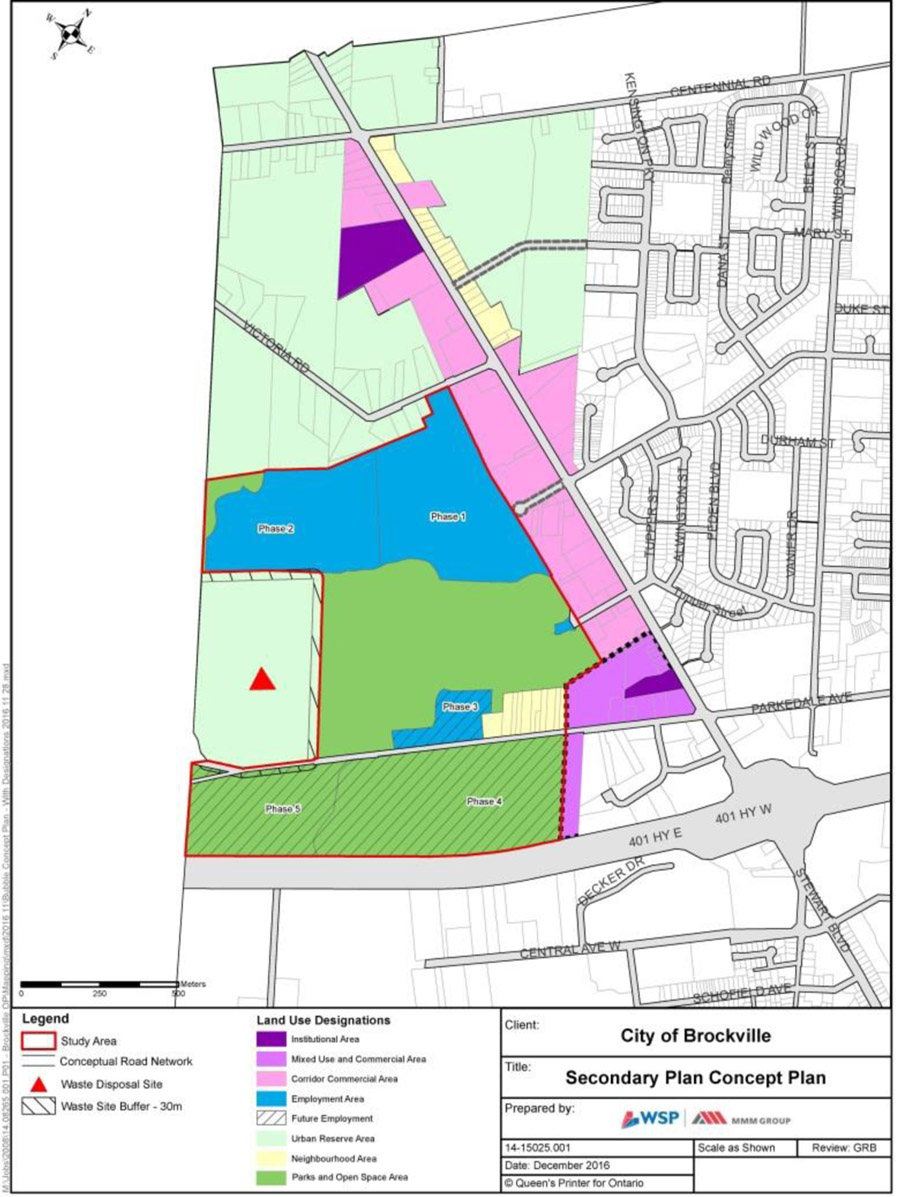
Two seemingly separate stories from city hall this week are in fact vitally related.
First, city councillors approved a 2017 budget that includesspending of $93,416 on a proposed regional economic development initiative, the first instalment in what is likely to be an annual payment.
And secondly, councillors learned at the same Tuesday meeting that the area of developable land available to them in the still-incipient northwestern industrial park is much smaller than they’d initially expected.
Councillor Jeff Earle, after expressing dismay at the reduction in development lands, made the connection explicit, noting that, since we’re now looking at economic development regionally, any new employers in the logistics and warehousing sectors will have to follow the lead of Giant Tiger and set up shop outside Brockville.
There’s simply not enough land available in tiny, boxed-in Brockville to accommodate such large land users, noted Earle.
Sure, one can fight to have the environmental restrictions on the northwest employment lands removed or relaxed. Or, as councillor Jason Baker suggests, one can hope for different regulatory conditions in the future that will permit development there.
But in general, our society has tended toward stricter environmental protection. And as the effects of climate change become more disastrously apparent in the coming decades, the kind of mass stampedes toward deregulation one sees in Donald Trump’s America, for instance, will be less likely.
Besides, preserving our natural heritage is an important objective on its own merits.
Brockville’s solution, then, is to think regionally.
Brockville’s contribution to the nascent St. Lawrence Corridor Economic Development Commission is $4 per capita. The proposed non-profit corridor commission is spelled out in a draft agreement that would create a regional economic development body working for Brockville and six other municipalities along the Highway 401 corridor: Prescott and the townships of Edwardsburgh/Cardinal, Augusta, Elizabethtown-Kitley, Front of Yonge and Leeds and the Thousand Islands.
City officials have long seen the merits of thinking regionally when trying to attract new employers. And now it may have just become a survival mechanism.
When your small, boxed-in city has almost no new land left to accommodate the larger employers, the regional option is even more starkly necessary. If you can’t bring the industrial customers into the city, then help them locate somewhere nearby where you can still reap some economic benefits from the proximity of those new jobs.
If we start to think in terms of the St. Lawrence corridor, the odds of finding available land for potential new employers, then getting that land serviced, improve.
This also demands a rethink of the city’s priorities with its own remaining land.
On Tuesday, Councillor Mike Kalivas suggested colleagues get their heads around what they want to do with that remaining property.
He cautioned against selling off small parcels to the first comers, then not being left with enough land when a “home run” industry comes along.
To which Mayor David Henderson replied: “When you have a prospect on your door, it’s very hard to turn them away.”

(A map provided by MMM Group Ltd. lays out the area of developable land in the northwest industrial park. The large green portion in the middle cannot be touched.)
A regional approach, however, might suggest the “home runs” land outside the Brockville park.
If the land and opportunity exist to locate larger industries outside the city limits, the new Brockville business park may in fact be a better home for a variety of smaller industries, perhaps even secondary manufacturers servicing the larger ones.
The resulting economic diversity may even be better for the city and region than giving up the entire new park to a single employer that uses lots of space but hires few people.
So, Kalivas is right: Brockville does need to get its head around the best possible use for the land it has.
But the answer may be different when the frame of reference is bigger.